An Expedition through the Tianshan Mountains & Wars of the Kyrgyz Tribes - Pyotr Semenov-Tianshansky, 1857
Translation of a letter by Russia's first explorer of the Tianshan Mountains
Preliminary note: For Gmail readers, this essay might be clipped due to size limitations. To read the entire essay simply click on “View entire message” at the bottom of the email, thanks.
Translator’s Introduction
Below is a translation of a letter by Pyotr Petrovich Semenov-Tianshansky to his sister Natalie, her husband Yakov Grot, his brother Nikolai and his wife Nadezhda. The letter was written in 1857, during Semenov-Tianshansky’s second expedition to the Tianshan Mountains. This letter has been published online by the Russian Geographical Society, and served as the source for this translation. It can be found here on the RGO’s website.
Pyotr Semenov-Tianshansky is a largely unknown figure in the English speaking world. He was the first Russian explorer to discover the Tianshan Mountains, the great mountain range that towers over all of Central Asia. The name is Chinese, meaning “Heavenly Mountains”, and has along been viewed as an almost mythical, far off land by China. Semenov-Tianshansky’s first expedition to the Tianshan Mountains took place in 1856, and he returned again in 1857. During his second expedition Semenov-Tianshansky was accompanied by the artist Pavel Mikhailovich Kosharov, who painted and drew several landscapes and depictions of the Kyrgyz nomads who live in the mountains. Kosharov’s works can be found here.
Later, Tsar Nikolai II awarded Semenov the epithet “Tianshansky” for his achievements in exploring Russia’s most distant and remote frontier in Asia. To this day his descendants hold the family name of Semenov-Tianshansky.
The letter is particularly interesting because it discusses conflicts between the various Kyrgyz tribes in the region. Semenov-Tianshansky mentions two tribes in particular that were at odds, the Bogin Burambays and the Sara Bagishis, with the former at the mercy of the latter. Reading between the lines, it appears the Bogin Burambays were on very friendly terms with Russia. A year after Semenov-Tianshansky’s expedition, the Russified Kazakh spy Chokan Valikhanov would travel through this region, also encountering the Burambays, who appeared to be much better off by then. Semenov-Tianshansky also briefly mentions that the Sara Bagishi are aligned with the Kokand Khanate, which was then Russia’s primary enemy in the region. Kokand rivaled Russia for control of the nomadic tribes who lived on the southern Kazakh steppes and in the Tianshan Mountains, and Russia’s main efforts at this time were defeating Kokand’s fortresses on the steppes and breaking the nomads off from Kokand’s control.
It can probably be speculated that Russia, seeing the Sara Bagishi tribe as being very powerful and aligned with Kokand, chose to partner with the Bogin Burambays and use them as a proxy against Kokand’s own proxy in the region. The Burambay’s greater prosperity in the following year is probably due to Russian aid they received which would have been decisive against the Sara Bagishis.
This of course is a very common imperial tactic by great powers. They find local allies who can be used both as proxy force against their enemy in the region, and also be used as imperial intermediaries later on. For more on Chokan Valikhanov’s visit to the Burambays, see my translation of an excerpt from his memoirs.
Lastly, if anyone knows anything more about the tribal fighting discussed in this letter, or about the relations between Kokand or Bukhara and the Kyrgyz, or knows of any good sources on this topic, please let me know. I would like to learn more about this subject.
Text
Sweet friends Nicolas, Natalie, Jacques and Nadine!
I am now sitting in a yurt1 of the Wild-stone,2 or the Black Kyrgyz on the River Karkara3 at the feet of the Heavenly Mountains, of the Tianshan.4 We are guest of the Manap,5 or Sultan, of the Bogin Burambay tribe, whose possessions stretch from frontiers of China up to half of Lake Issyk Kul.6 We (myself and traveling with me is the painter Kosharov7) are living here in the complete open. Every morning the Manap of the Wild-stone Kyrgyz rides to us to ask us about our health, and brings us lamb, kumis,8 and more.
My convoy consisted of 20 Cossacks, who are of course, perfectly armed. Everyone has a gun, pistol, bayonet and a sword and around 60 rounds. Truly, the guns shoot crooked and askew, the bullets will fall short 5 times out of 10, and pistols are even worse, and why this is no one knows. Kosharov and I also have revolvers, with which the Buruts are not the least impressed by. The Buruts are the so-called Wild-stone Chinese9 Kyrgyz.
The circumstance in which we arrived to the Burambays contributed their disposition to us. For three years already they have carried out a violent war against the Sara Bagishi, another tribe of the Wild-stone Kyrgyz, who are subjects of the Kokand Khan.10 Everywhere the Sara Bagishi are on the rise: last year they sacked the aul11 of Burambay, captured two of his yurts and two of his wives (he has four wives); this spring they smashed the entire family of Bogins – 600 people were killed, 1200 taken as prisoner, all of their property and cattle were captured, the Burambays were forced out from Lake Issyk Kul, and half of their land was captured. The Burambays were being pushed to the edge, and were expecting further attacks on their auls. Only the accidental arrival of the Russian detachment, 23 sinners in number, gave them peace.
The Sara Bagishi, informed about our arrival (and news among Asians is always exaggerated and snowballs along the road like an avalanche), cleared out from Lake Issyk Kul and hastily fled with their yurts and herds up into the Tianshan Mountain, 300 versts from the Burambay auls, from which they were initially only 20 versts12 away. Probably, my escort of 20 Cossacks was exaggerated to be 200 or 2000, two revolvers became 2 cannons, the only result was that the whole tribe fled before us, 30,000 horseman strong, and Issyk Kul returned to Russian supremacy. Simply incredible!
I hastened, however, to take advantage of such an incredible event and headed towards the southern shore of Lake Issyk Kul and from there the heights of the famous mountain pass Zaukin13 in the Tianshan Mountians. This is the only convenient trade route in Lesser Bukhara,14 from Kashgar15 to Turpak.16 Of course, convenience is a relative concept. I left 10 of my Cossacks at the foot of the pass (4 left were left with the Burambays, along with our camels and things) and went with 5 Cossacks and without any packs, and started to rise, the first mountain pass was 10,400 feet (3 Vesuviuses or 3 Brockens17 one on top of another or if Vesuvius was placed on top of Great Saint-Bernard18), the second, final climb from the upper green lake to the peaks was horribly difficult.
(We could barely go along the steep zigzagging path on foot and had to led the horses along the terrible cliffs and boulders, meeting a fresh corpse of a horse or camel every 10 steppes, before which our horses rushed to the side of the ledge, threatening to drag us along. The horse of our Baid (leader) split her hooves lengthwise, while my horse fell, injuring her legs and stepping forward, leaving a bloody trail on the path. Kosharov fell with his horse and was saved by a Cossack, who grabbed the horse by its tail. Higher up we encountered a terrible cold, despite it being the 13th/25th19 of July under the scorching “Italian” sun.)
Two lakes are at the peak of the Zaukin pass were covered with a thick layer of ice, in pits with lumps of snow. The surrounding peaks were raised very low above the lake, capped with a thick layer of eternal snow, and a cold small river lazily carried its waters into the icy lake. All around, however, was a carpet of brilliantly bright alpine flowers, ahead was a ridge of low hills, covered top to bottom in snow. We could only travel as far as these hills. The road to Kashgar went between them as if it was a flat and smooth valley, and here was the highest point of the pass.
Passing through this alley and going downwards a bit, we would find the origins of the Naryn River, which becomes the Syr-Darya.20 It only took us half an hour to reach this place. I already managed to figure out the height of the mountain pass. But the time was already far past noon; clouds surrounded us on all sides and snow was falling. Caution ordered us to return. It would have been a dangerous storm or blizzard. Only 2 Cossacks remained with me; the rest had lagged behind with the wounded and tired horses at the bottom. My goal had been reached: the height of the mountain pass had been determined, plants were collected, views seen, and the composition of rocks determined as well. Descending from the southern slopes of Tianshan range in Lesser Bukhara I would have seen nothing, because we were surrounded clouds. To reach China from here it would have taken a day. We could not spend two more nights in the mountains, because we had to go to Lake Issyk Kul: a detachment of 500 Bogins had gone off to fight the Sara Bagishi. I foresaw that Sara Bagishi would destroy them, and was afraid that the Sara Bagishi had a significant number, and would cut the Bogins off from us. By late at night we returned to the 10 Cossaks we had left behind and spent a second night in the mountains.
On the next day were arrived to the very shores of Issyk Kul, where we camped. We returned to Issyk Kul in time, as there was no word about the detachment of Bogins or the persecution of the Sara Bagishi. We had fasted horribly the entire time, eating only crackers and tea, and nothing else. At least here at Issyk Kul the fish were plentiful, but how to catch them is another question. Doesn’t the Russian genius consist of namely that, to do all with extraordinary Diogenesian21 simplicity of means. Fishing in shallow bays and lagoons of Issyk Kul, Cossacks dressed in the custom of Adam with a sword in hand and chop up 11 pounds of fish – all large and tasty carp. We ate as much as we could, and what remained we salted and took with us; we had 21 people with us including the Kyrgyz leaders.
From the southern shore of Issyk Kul we crossed over to the northern side. Here the weather did not favor us and we did not catch anything. The mountain chain Kungei Alatau rises above the northern side of Issyk Kul like a wall. I climbed up two of the mountain passes and measured their heights, one was 9200 feet, the other 8000 feet. After this they safety returned to Karkara to the aul of Burambay. Kosharov captured 25 views of Lake Issyk Kul and the Tianshan Mountains. All this you will see when I return.
We returned in time. The entire previous day, as I had foreseen, the shattered remains of the Bogin detachments returned. They had fallen into a trap, and were surrounded on three sides by the Sara Bagishi and lost many people who were killed and taken prisoner.
(One father, who lost his single son in this battle, drove past our yurt weeping and howling. The son of Kadzhimgul, our friend (the brother of Burambay), returned with his cheek pierced through by a lance. The Bogins will never go against the Sara Bagishi again, they will not agree and unify, and the Sara Bagishi – they are the Circassians of the region,22 very militaristic and influential as a tribe.)
We lived here peacefully in the middle of various military operations. In the west on Issyk Kul frequent battles were going on between the Bogins and Sara Bagishi, in the east Russian detachments were surrounded by Chinese, who could have taken them completely,23 in the south beyond the Tianshan Mountains Bukhara24 is arming rebels against China and these rebels took four cities: Kashgar, Yekan,25 Um Turpak,26 and it seems, Khatan.27 A Chinese detachment of 2000 men went across the Tianshan Mountains to suppress the uprising.
For four days I decided to rest from the weariness of my 11-day campaign to Issyk Kul and Zaukin. Here we fattened up after our fasting during the campaign. Our food was half-Asian. Soup from lamb with brine and Parisian beans (from the canned food I brought) made up the base of our meals. We also ate lamb cutlets with green peas, or Kyrgyz plov from rice with raisins on lamb fat, or shashlik (pieces of lamb fried strung on a stick), or edhingay (a kind of cottage cheese from cream). We drank tea, kumis, aryan (a kind of curdled milk).
The climate of Karakor28 is cold. At a height of 6000 feet, almost every night it freezes. The day after tomorrow I will go to the top of Kara, and then to Tekes, all in the Heavenly Mountains or Tianshan range, which in the upper reaches of the Tekes and Karkor seems higher than the Caucasus range. In my yurt we lived with comfort: clean, neat, spacious and even pretty, better than my previous residence in the provinces, as I prefer a good yurt to my dilapidated house in Petrovka during the summer time.
My spotting scope is an object of great pleasure for the sons of Burambay. One of them, Emirzak, now sits in my yurt and look into the scope. All the offspring of Burambay have become enamored with me, because I gifted many things to all of his children, grandsons, brothers and relatives, very generously. I had spent 300 silver rubles to purchase gifts for the Kyrgyz. The daughters of Burambay all have very original names, one is called Izyum,29 another is named Abrikos30 (Uryuk), a third is Yabloko31 (Alma).
For such a prefect campaign came at a cost of only two horses: one broke its spine, and another fell and was dashed across rocks below. Kosharov and I slightly injured our legs, but despite that we are healthy and happy. On occasion again I will write to you. I hope to return to the fortress of Verny32 during the first days of August.
With all my heart, your brother P. Semenov.
Traditional nomadic tent
Wild-stone horde, name of the Kyrgyz of the Tianshan Mountains, in the region south of the Ili River and east of Lake Issyk Kul
At the modern Kyrgyz-Kazakh border, east of Issyk Kul
Tianshan is a Chinese word which means “Heavenly Mountains”. Throughout the letter Semenov-Tianshansky calls them the “Heavenly Mountains”, which means the same thing, but for simplicity I translated it always as Tianshan, as this name is better known
Kyrgyz nobility
A major lake nestled in the Tianshan Mountains, in modern Kyrgyzstan
Pavel Mikhailovich Kosharov
Nomadic drink, made from fermented milk
Southeastern Kazakhstan and Kyrgyzstan remained nominally a part of the Chinese Qing Dynasty until 1861, with the Treaty of Tarbagatai which demarcated the Russian-Chinese border in Central Asia
Kokand Khanate was based in the city of Kokand in the Fergana Valley, southwest of the Wild-stone Kyrgyz. The Khanate maintained extensive ties to the nomads on the steppes and in the mountains
A Turkic word for village
Old Russian unit of measurement, equivalent to 1.1 kilometers
Now the Barskoon Pass, and the modern A364 highway from Barskoon at Issyk Kul, southwards to Kara-say at the Naryn River
Bukhara was one of the main khanates in Central Asia that rivaled Russia. Lesser Bukhara likely refers to Bukhara’s empire in the mountains, where nomads would pledge themselves to the Emir
In the Tarim Basin, in Chinese Turkistan, a major trade emporium
I am unable to located this place
A mountain in central Germany
A mountain pass in the Swiss Alps which leads to Italy
The Julian and Georgian dates, as Russian only adopted the latter after 1917
Known as the Jaxartes in ancient times
Likely a reference to Diogenes the Cynic
The Circassians are a large, semi-nomadic people from western North Caucasus and Kuban region. They were fiercely independent and Russia had great trouble in conquering them. Russia ultimately had to ethnically cleanse most of them, forcing them into exile to Turkey
I am unsure to what this refers to. Possibly sometime happening the Amur River in the Far East, a region which would be annexed to Russia a year after this letter was written (1858)
Semenov-Tianshansky is almost certainly mistake Bukhara with the Kokand Khanate. Kokand in the Fergana Valley regularly sponsored anti-Qing rebels in the Tarim Basin. For more, see “The Kokand Khanate” by Scott C. Levi
Yarkent
Uch Turpan (I think)
Khotan
Possibly modern Karakol, at the eastern end of Issyk Kul
Which means “raisin” in Russian
Apricot
Apple
Called Almaty today, in southeastern Kazakhstan





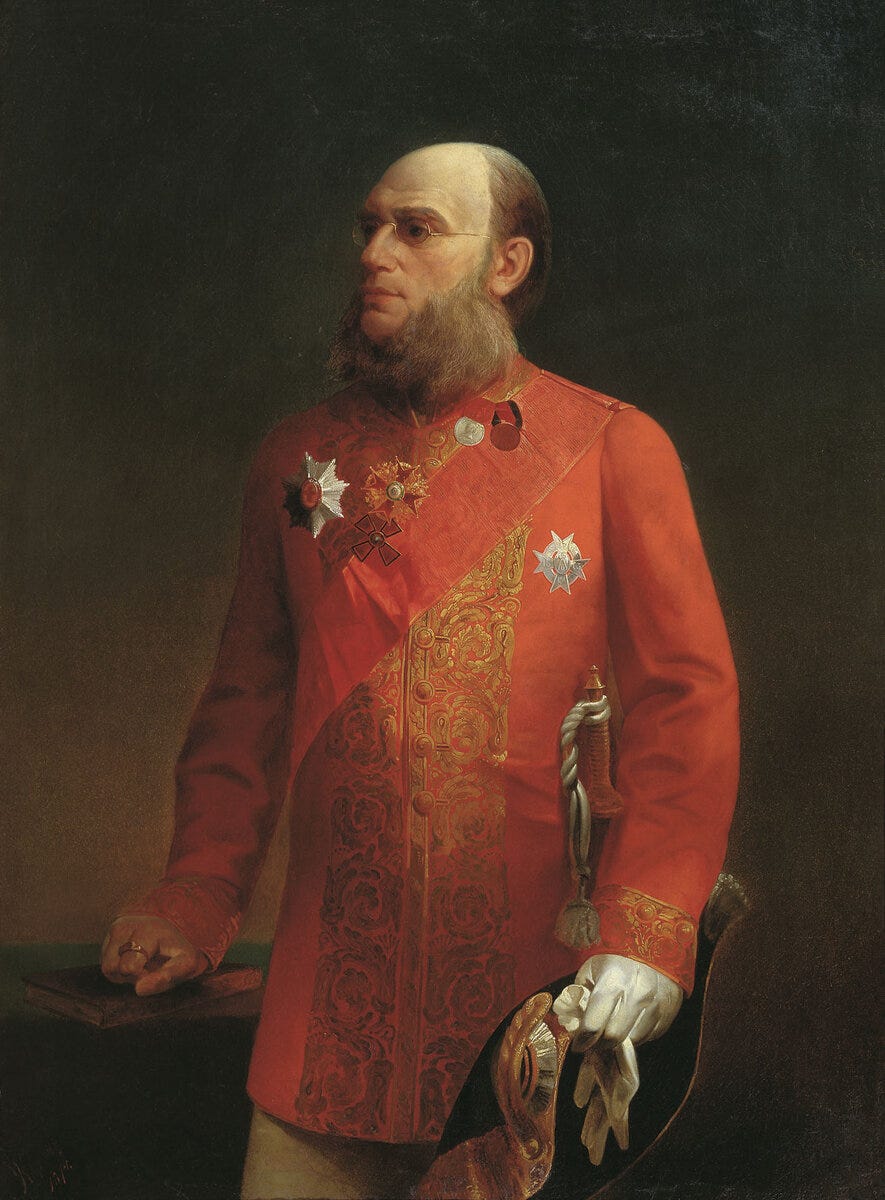

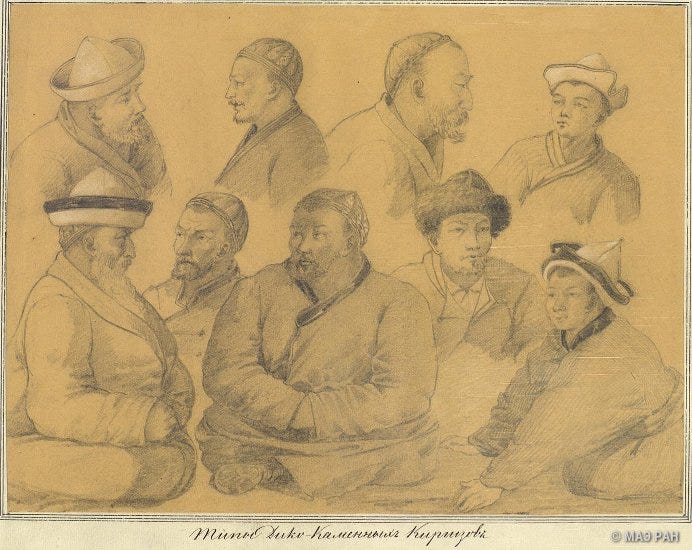

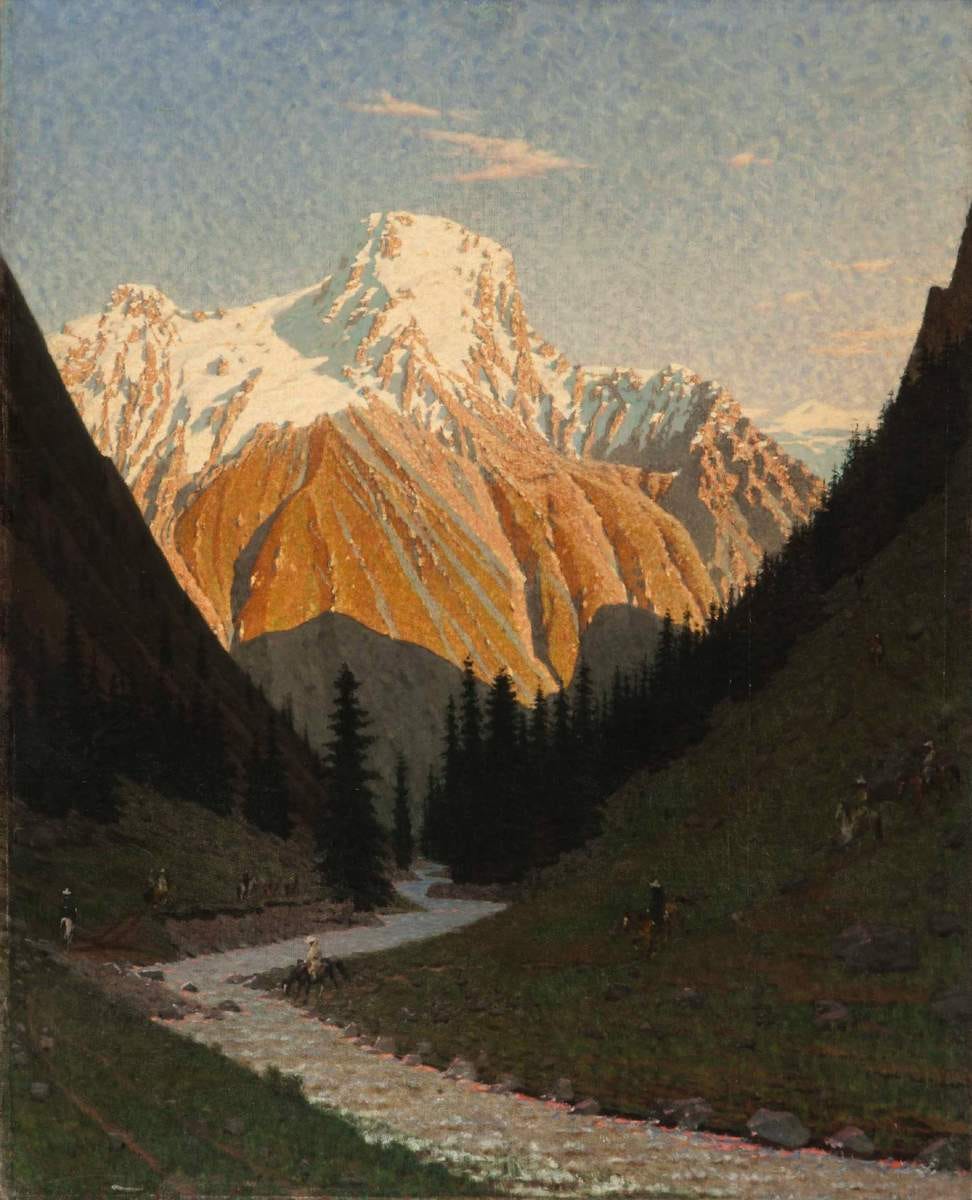


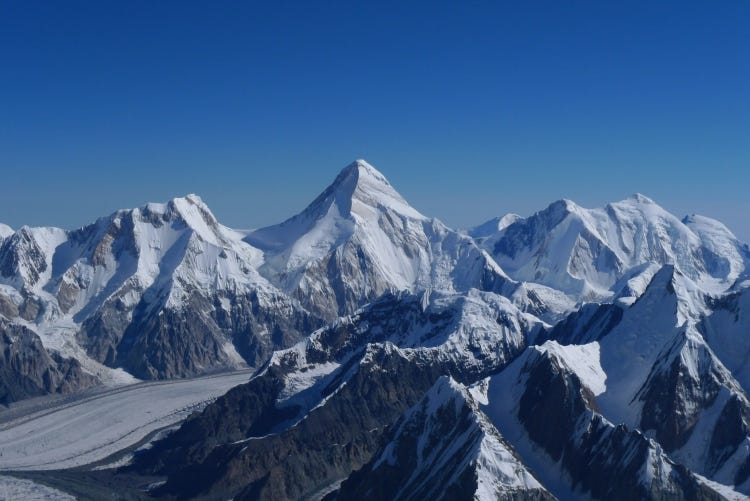

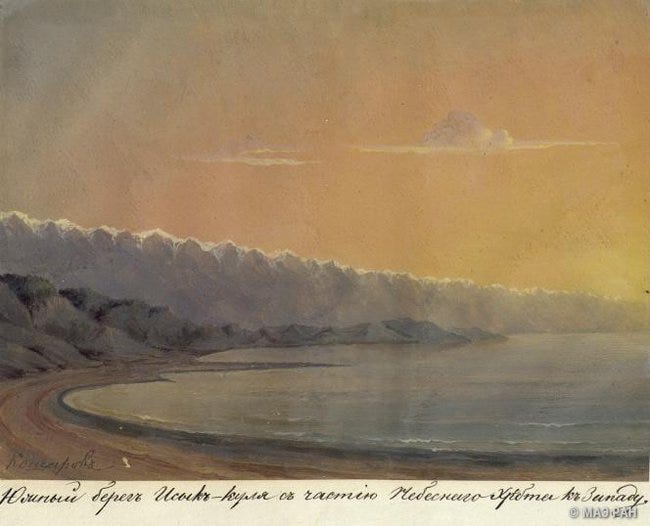


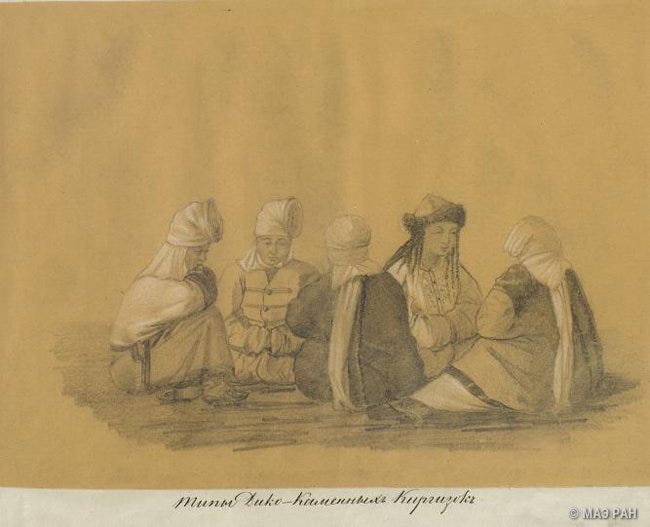

Very interesting. Thanks very much for writing. The pictures of the area are great too!